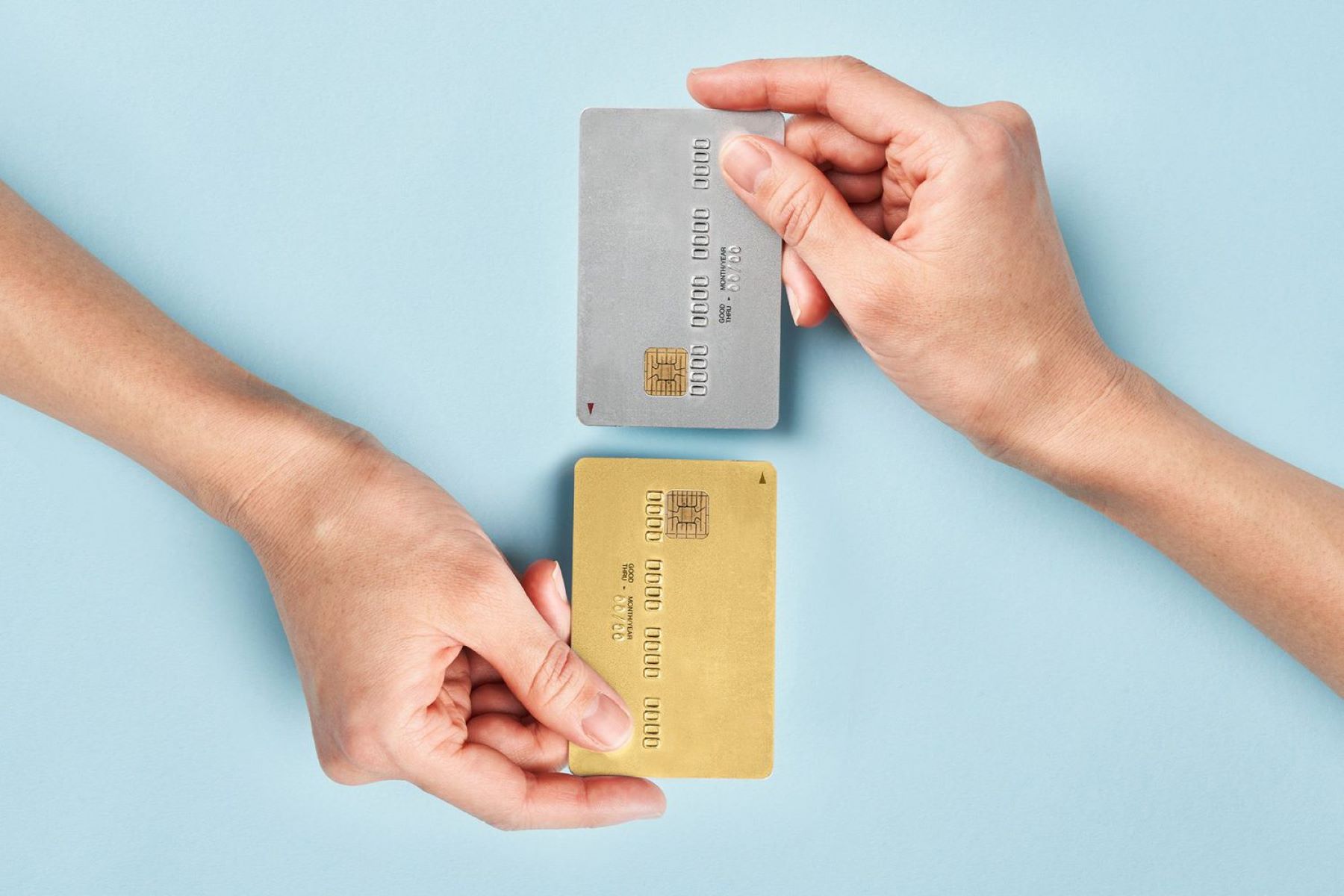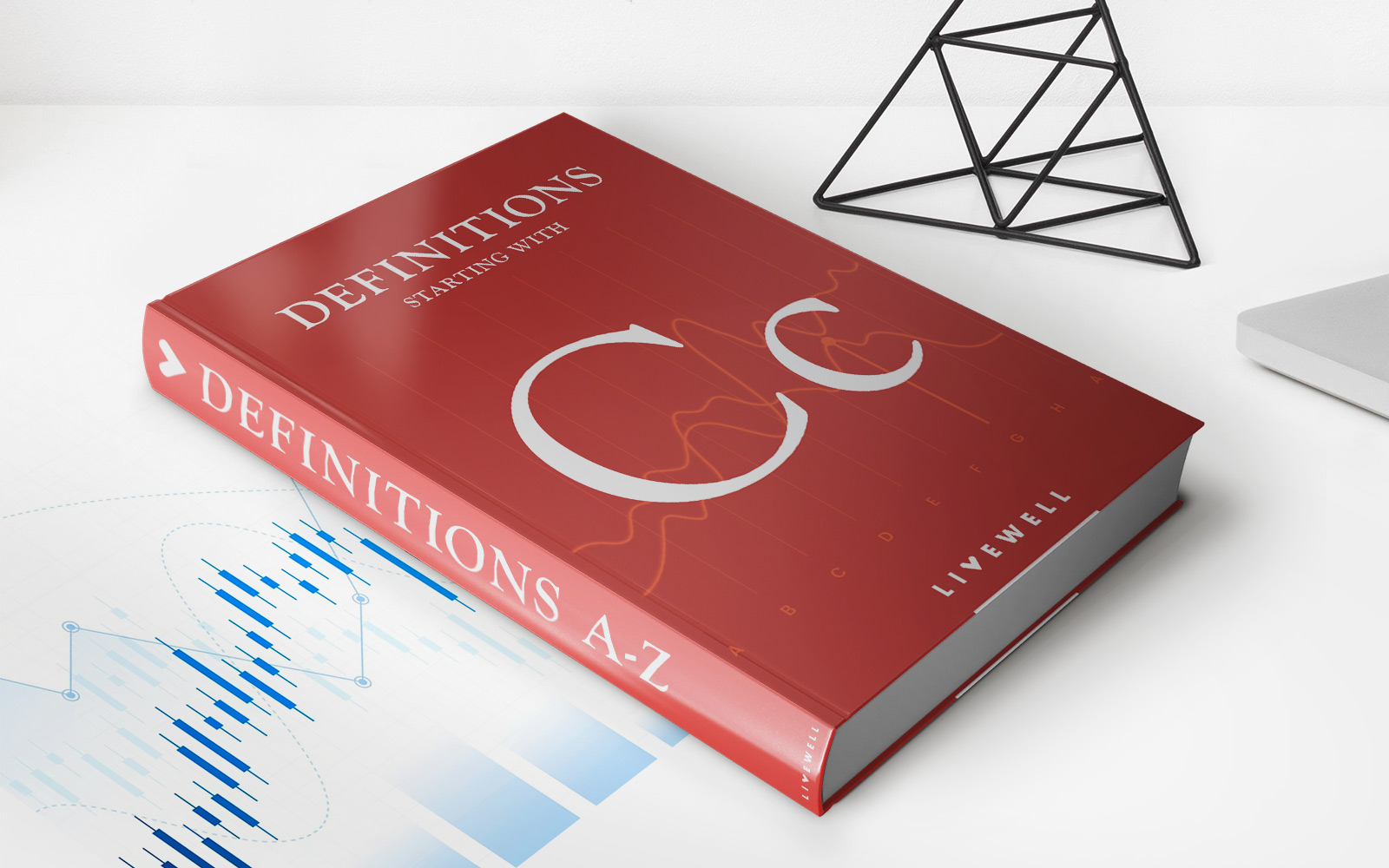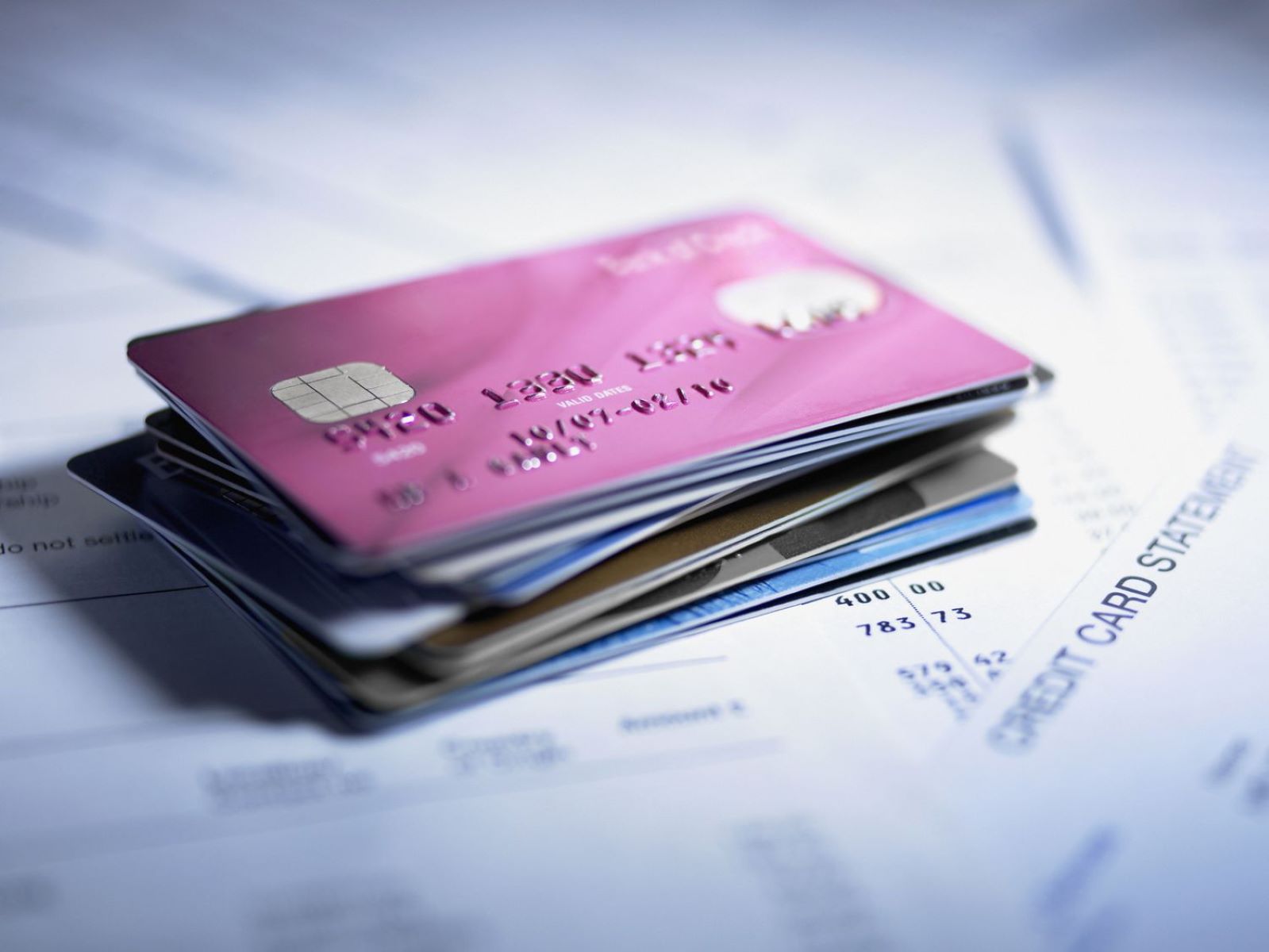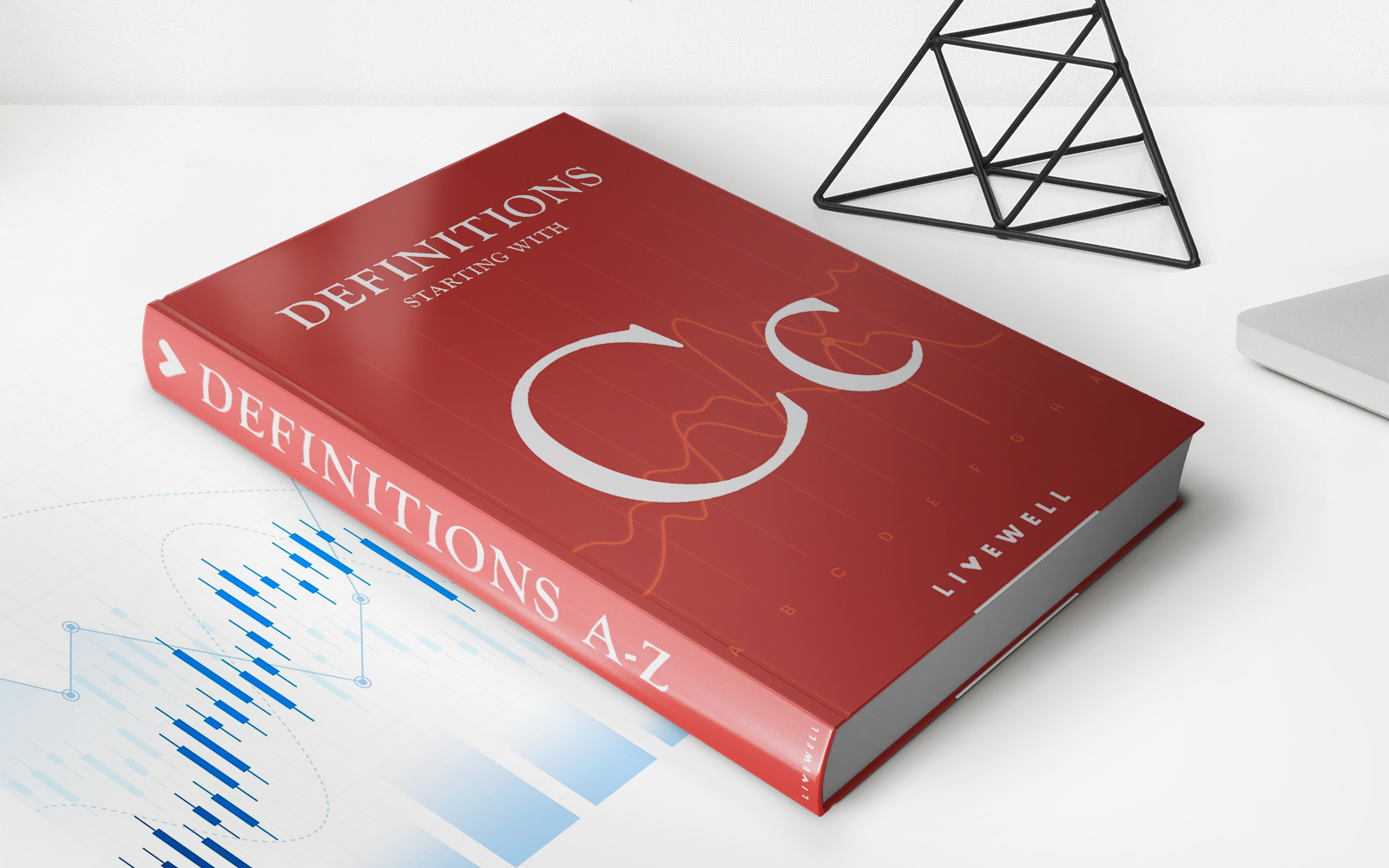

Finance
What Is Charge Card Vs Credit Card
Modified: March 1, 2024
Learn about the key differences between charge cards and credit cards in finance. Make an informed choice and manage your finances effectively.
(Many of the links in this article redirect to a specific reviewed product. Your purchase of these products through affiliate links helps to generate commission for LiveWell, at no extra cost. Learn more)
Table of Contents
Introduction
When it comes to managing personal finances, it is crucial to understand the various financial tools and instruments available. Two commonly used tools are charge cards and credit cards. While they may be similar in some ways, they differ in important aspects that can impact your financial decisions. In this article, we will explore the differences between charge cards and credit cards, helping you make an informed choice based on your financial needs and goals.
A charge card is a type of payment card issued by financial institutions that allows you to make purchases without the option to carry a balance. Unlike credit cards, which allow you to pay the minimum amount due and carry a balance from month to month, charge cards require you to pay the full balance by the due date. This means that you must have the financial means to pay off the charges in full each month, making charge cards suitable for those who have the discipline to manage their spending and can afford to pay off their balances promptly.
On the other hand, a credit card is a payment card that allows you to make purchases on credit, meaning you can spend up to a predetermined credit limit and then repay the amount over time. With credit cards, you have the flexibility to pay the minimum payment each month and carry a balance, but keep in mind that interest charges will be applied on the remaining balance. This makes credit cards suitable for those who require more flexibility in managing their finances and prefer the option to make smaller payments over time.
Understanding the key differences between charge cards and credit cards can help you determine which option is better suited for your financial situation. In the following sections, we will delve deeper into the various aspects that differentiate these two payment methods, including eligibility, spending and repayment structure, credit limits, rewards and benefits, fees and interest charges, impact on credit score, and acceptance and accessibility.
Definition of Charge Card
A charge card is a type of payment card that allows you to make purchases with the requirement of paying off the full balance by the due date. Unlike credit cards, charge cards do not provide an option to carry a balance or pay the minimum payment. This means that you must have the financial means to settle the entire amount charged on the card each month.
Charge cards are typically issued by financial institutions such as banks or credit card companies. They are often associated with higher credit limits compared to credit cards, as they require you to demonstrate strong creditworthiness and a stable income. The credit limit is the maximum amount you can charge on the card at any given time.
One key feature of charge cards is that they do not have a preset spending limit. Instead, the credit limit is determined based on your financial profile, including your income, credit history, and other factors assessed by the card issuer. This gives you the flexibility to make large purchases within the approved limit, but it also means you must be diligent in managing your spending to ensure you can pay off the entire balance by the due date.
Charge cards are typically targeted towards individuals with a responsible approach to finances and the ability to pay off their balances in full each month. They are often used by businesses or frequent travelers, as charge cards may offer additional perks such as travel rewards, access to airport lounges, and concierge services. However, it’s important to note that charge cards usually come with an annual fee, which helps offset the cost of providing these premium benefits.
One significant advantage of charge cards is that they do not charge interest on balances since they require full payment each month. This can be beneficial for individuals who want to avoid high interest charges and prioritize maintaining a healthy financial standing. However, it’s important to remember that late or missed payments on charge cards can have a negative impact on your credit score, so it is essential to stay organized and ensure timely payments.
In summary, a charge card is a payment card that requires you to pay off the full balance each month. It offers flexibility in spending, higher credit limits, and exclusive perks, but it demands responsible financial management and the ability to meet the payment requirements.
Definition of Credit Card
A credit card is a widely used payment card that allows individuals to make purchases on credit and pay off the balance over time. Unlike charge cards, credit cards provide the option to carry a balance from month to month, with the requirement to pay at least a minimum payment by the due date. This flexibility makes credit cards a popular choice for many consumers as it allows them to make purchases even if they don’t have the full amount available at the time of the transaction.
Credit cards are typically issued by banks or financial institutions and come with a predetermined credit limit. The credit limit is the maximum amount that can be charged to the card. It is determined based on factors such as your creditworthiness, income, and other financial information. The credit limit represents the amount of credit that the issuer is extending to you, allowing you to make purchases up to that specified limit.
One key feature of credit cards is that they provide the option to pay the minimum payment due each month, which is typically a small percentage of the outstanding balance. While this flexibility can be convenient, it’s important to note that carrying a balance on a credit card incurs interest charges. The interest rate, also known as the Annual Percentage Rate (APR), is applied to the remaining balance, and finance charges are added to your outstanding debt. It’s important to manage credit card balances responsibly to avoid accumulating high levels of debt and paying excessive interest charges.
Credit cards are commonly used for various types of transactions, including online shopping, in-store purchases, travel bookings, and bill payments. They offer convenience and security, as they provide protection against fraudulent charges, purchase disputes, and offer additional security features like chip technology and PINs.
In addition to the convenience and flexibility, credit cards often come with rewards and benefits programs. These can include cashback rewards, airline miles, hotel points, and other incentives for cardholders. Rewards programs vary among credit card issuers, and they provide an opportunity to earn valuable perks based on your spending habits.
It’s important to note that credit cards can impact your credit score. Timely payments and responsible credit utilization are crucial for maintaining a good credit rating. Late or missed payments, high credit card balances relative to the credit limit (known as utilization ratio), and opening multiple credit card accounts within a short period of time can negatively impact your credit score.
In summary, a credit card is a payment card that allows individuals to make purchases on credit and repay the balance over time. It offers flexibility in payments, rewards programs, and various additional benefits. However, responsible credit card management and timely payments are essential for maintaining a healthy credit rating and avoiding high-interest charges.
Key Differences between Charge Card and Credit Card
While charge cards and credit cards are both payment tools, there are several key differences between them that can affect how they are used and managed. Understanding these differences can help you determine which option is more suitable for your financial needs. Here are the main distinctions between charge cards and credit cards:
- Repayment Structure: The main difference between charge cards and credit cards lies in the repayment structure. With a charge card, you are required to pay off the full balance every month, whereas with a credit card, you have the option to carry a balance from month to month and make minimum payments.
- Spending Limit: Charge cards typically provide a higher spending limit compared to credit cards, allowing you to make larger purchases within the approved limit. Credit cards, on the other hand, have a predetermined credit limit that can be increased over time based on your creditworthiness and financial situation.
- Interest Charges and Fees: Since charge cards require full payment each month, they do not charge interest on balances. However, charge cards often come with an annual fee to cover the additional benefits and features they offer. Credit cards, on the other hand, charge interest on outstanding balances and may have additional fees like late payment fees and balance transfer fees.
- Rewards and Benefits: Both charge cards and credit cards often offer rewards and benefits programs that provide incentives for cardholders. These can include cashback rewards, travel rewards, loyalty points, and various benefits like airport lounge access or concierge services. However, the specific rewards and benefits can vary between card issuers and individual cards.
- Eligibility and Application Process: Charge cards typically have more stringent eligibility criteria compared to credit cards. They often require a higher credit score, a stable income, and a history of responsible financial management. Credit cards, while still requiring a good credit score, may have more flexible eligibility requirements and offer a wider range of options for individuals with different credit profiles.
It’s important to consider your financial habits, responsibility, and spending patterns when deciding between a charge card and a credit card. If you are confident in your ability to pay off the balance in full each month and prefer higher spending limits, a charge card may be a suitable option. On the other hand, if you require the flexibility of making minimum payments and carrying a balance, a credit card may be a better choice. Make sure to evaluate the fees, interest rates, rewards, and benefits offered by different card options to find the one that aligns with your financial goals and priorities.
Eligibility and Application Process
The eligibility criteria and application process for charge cards and credit cards can vary depending on the card issuer and specific card offering. However, there are some general guidelines that can help you understand the requirements and steps involved in obtaining these payment instruments.
Eligibility: Charge cards typically have more stringent eligibility requirements compared to credit cards. They are designed for individuals with a strong credit history, high income, and a demonstrated ability to manage their finances responsibly. Card issuers may require a minimum credit score, stable employment, and a certain level of income to qualify for a charge card. On the other hand, credit cards may have more flexible eligibility criteria, catering to individuals with varying credit profiles, including those with limited credit history or lower credit scores.
Application Process: The application process for both charge cards and credit cards generally starts with filling out an application form. This can often be done online through the card issuer’s website or by visiting a physical branch. The application form will require you to provide personal information, such as your name, address, contact details, income, and employment information.
In addition to the basic personal information, you may also be asked to provide details about your financial history, including any existing credit cards, loans, or other financial obligations. This helps the issuer evaluate your creditworthiness and determine your eligibility for the card.
Once you’ve submitted the application, the card issuer will review your information and conduct a credit check. This involves assessing your credit history, credit score, and overall financial health. The credit check helps the issuer determine whether you meet their specific criteria for approval.
If your application is approved, you will typically receive your charge card or credit card in the mail within a few weeks. Along with the card, you may also receive the cardholder agreement, which outlines the terms and conditions of card usage, fees, interest rates, and any specific perks or benefits associated with the card.
It’s important to note that applying for a credit card or charge card may have an impact on your credit score. Each application results in a hard inquiry on your credit report, which can temporarily lower your credit score. It’s advisable to research and compare different card offerings and their eligibility requirements before applying to increase your chances of approval and minimize the number of applications submitted.
In summary, the eligibility and application process for charge cards and credit cards vary, with charge cards typically having more stringent requirements. It’s essential to understand the specific criteria set by the issuer and provide accurate and complete information during the application process. Researching and comparing different card options can help you find the card that best matches your financial situation and goals.
Spending and Repayment Structure
The spending and repayment structure is a significant difference between charge cards and credit cards. Understanding these differences can help you determine which payment method aligns better with your financial habits and goals.
Charge Cards: With a charge card, you are required to pay off the full balance each month by the due date. This means that you cannot carry a balance or make minimum payments. Charge cards typically have a grace period of around 30 days, allowing you to make purchases throughout the month without incurring interest charges. However, it’s important to note that if you fail to pay the full balance by the due date, you may be subject to late payment fees or penalty charges.
The spending flexibility of charge cards can be beneficial for individuals who have the financial means to pay off their balances in full each month. They provide an opportunity to make larger purchases within the approved credit limit and can be useful for business expenses or planned expenditures. However, it’s crucial to exercise discipline and ensure that you can meet the payment obligation to avoid any negative impact on your credit score.
Credit Cards: Credit cards offer more flexibility when it comes to spending and repayment. With a credit card, you have the option to carry a balance from month to month and make minimum payments. You can choose to pay off the entire balance or make a minimum payment, which is typically a small percentage of the outstanding balance or a fixed amount, depending on the credit card issuer’s terms. However, keep in mind that carrying a balance on a credit card incurs interest charges.
Credit cards provide greater financial flexibility, allowing you to spread out payment over time. This can be useful for managing cash flow and unexpected expenses or making larger purchases that you may not be able to pay off in full immediately. However, it’s important to manage credit card balances responsibly to avoid excessive interest charges and potential debt accumulation.
It’s crucial to note that responsible usage of both charge cards and credit cards is vital for maintaining a good credit standing. Paying off the full balance on a charge card or making timely payments and managing credit utilization on a credit card can help establish and improve your credit score. On the other hand, late or missed payments on both types of cards can negatively impact your credit score, so it’s essential to stay organized and make payments on time.
In summary, charge cards require full payment of the balance each month, while credit cards provide the option to carry a balance and make minimum payments. Both payment methods have their advantages and considerations. Choosing the right option depends on your financial discipline, ability to meet payment obligations, and personal spending habits.
Credit Limit
The credit limit is an important factor to consider when comparing charge cards and credit cards. The credit limit represents the maximum amount of credit that can be charged on the card. It determines how much you can spend using the card and impacts your purchasing power. Understanding the differences in credit limits can help you decide which option is more suitable for your financial needs.
Charge Cards: Charge cards typically offer higher credit limits compared to credit cards. This is because charge cards require full payment of the balance each month, so issuers may be more willing to extend higher credit limits to individuals who demonstrate strong financial capability and responsible spending habits. The credit limit on a charge card is determined based on a variety of factors, including your creditworthiness, income, and financial history. Having a higher credit limit can provide more flexibility and allow you to make larger purchases, but it also requires careful financial management to ensure you can pay off the full balance by the due date.
Credit Cards: Credit cards have a predetermined credit limit, which is set by the card issuer when you are approved for the card. The credit limit on a credit card can vary depending on factors such as your credit score, income, and other financial information. Initially, the credit limit may be lower for individuals with limited credit history or lower credit scores, but it can increase over time as you establish a positive credit record. The credit limit gives you the ability to make purchases up to that specific amount, and you have the flexibility to carry a balance and make minimum payments, subject to interest charges.
It’s important to note that the credit limit on both charge cards and credit cards is not fixed and can be adjusted over time based on your financial behavior, creditworthiness, and card issuer’s policies. Card issuers may periodically review your account and may consider increasing or decreasing your credit limit based on various factors.
When considering the credit limit of a card, it’s crucial to evaluate your spending habits and financial capabilities. While a higher credit limit can provide more spending power, it also carries the risk of overspending and accumulating debt. It’s essential to use credit responsibly and ensure that you can comfortably manage your payments based on the credit limit provided.
Monitoring your credit utilization, which is the percentage of your available credit that you are using, is also important. Utilizing a high percentage of your credit limit can negatively impact your credit score, even if you are making timely payments. Maintaining a lower credit utilization ratio demonstrates responsible credit management and can help improve your credit score.
In summary, charge cards generally offer higher credit limits compared to credit cards. The credit limit on a charge card is determined based on various financial factors and is suited for individuals who can pay off the full balance each month. Credit cards have a predetermined credit limit and provide the flexibility to carry a balance and make minimum payments, subject to interest charges. Consider your financial capabilities, spending habits, and responsible credit usage when assessing the credit limit offered by different card options.
Rewards and Benefits
One of the appealing aspects of using both charge cards and credit cards is the rewards and benefits programs they offer. These programs provide an opportunity to earn incentives and enjoy additional perks based on your spending habits and card usage. While the specific rewards and benefits can vary between card issuers and individual cards, understanding this aspect can help you choose the card that aligns with your lifestyle and financial goals.
Charge Cards: Charge cards often come with premium rewards and benefits programs, catering to individuals with higher spending power and responsible financial management. These programs may include features such as travel rewards, airline miles, hotel points, and access to exclusive experiences and events. Charge cards are particularly popular among frequent travelers, as they often offer perks such as airport lounge access, complimentary upgrades, and concierge services. However, it’s important to note that charge cards typically come with an annual fee to help offset the cost of these premium benefits.
Credit Cards: Credit cards also offer a variety of rewards and benefits programs that can cater to different lifestyles and spending preferences. These may include cashback rewards, points-based systems, or travel rewards. Cashback rewards programs provide a percentage of your purchases back as cash, which can help offset your expenses. Points-based systems allow you to earn points for each dollar spent, which can be redeemed for merchandise, gift cards, or travel-related expenses. Travel rewards programs often offer perks such as airline miles, hotel discounts, and other travel benefits. Additionally, credit cards may provide additional benefits like extended warranties, purchase protection, price protection, and even access to exclusive events or VIP experiences.
When considering the rewards and benefits offered by different cards, it’s important to assess your spending habits and determine which type of rewards would be most valuable to you. If you frequently travel, a card with travel rewards and airport lounge access may be more appealing. If you prefer cashback or points that can be redeemed for various purchases, a card with a strong cashback or points-based program may be a better fit.
Additionally, it’s essential to assess the fees associated with these rewards and benefits programs. Some cards may offer attractive rewards but come with higher annual fees or transaction fees that may impact the overall value of the rewards earned. Evaluate the benefits, fees, and potential redemption options to ensure that the rewards and benefits align with your spending habits and financial goals.
In summary, both charge cards and credit cards offer rewards and benefits programs that provide incentives and perks for cardholders. The specific rewards and benefits can vary between issuers and individual cards, catering to different lifestyles and spending preferences. Consider your spending habits, preferences, and the associated fees when evaluating the rewards and benefits offered by different card options.
Fees and Interest Charges
Understanding the fees and interest charges associated with charge cards and credit cards is crucial when comparing the two payment methods. These fees and charges can impact the overall cost of using the card and should be taken into consideration when evaluating your financial options.
Charge Cards: Charge cards commonly come with an annual fee, which is charged by the issuer to cover the additional benefits and features offered. This fee helps offset the cost of perks such as travel rewards, airport lounge access, and concierge services. Additionally, some charge cards may have other fees, such as foreign transaction fees for purchases made in another currency or late payment fees if you fail to pay the full balance by the due date. However, charge cards do not charge interest on balances since they require full payment of the balance each month.
Credit Cards: Credit cards may also come with an annual fee, especially for cards that offer enhanced rewards or premium benefits. However, many credit cards are available with no annual fee. It’s important to compare the rewards, benefits, and fees associated with different credit cards to determine which option provides the best value. In addition to the annual fee, credit cards often charge interest on balances carried from month to month. The interest rate, also known as the Annual Percentage Rate (APR), varies between cards and can significantly impact the cost of borrowing. Some credit cards may offer introductory 0% APR periods, which means no interest is charged on new purchases or balance transfers for a specific period. It’s also important to be aware of other fees that may be associated with credit cards, such as late payment fees, balance transfer fees, cash advance fees, and foreign transaction fees.
When comparing charge cards and credit cards, it’s important to assess the fees and interest charges based on your financial habits and spending patterns. If you are confident in your ability to pay off the full balance each month, a charge card that charges an annual fee may be worthwhile if it offers significant rewards and benefits. On the other hand, if you anticipate carrying a balance from month to month, it’s important to consider the interest rate and other potential fees associated with a credit card to determine the overall cost of using the card.
It’s crucial to use these payment cards responsibly and be mindful of the potential fees and interest charges. Paying off the full balance on a charge card by the due date and making timely payments on a credit card can help you avoid unnecessary fees and interest charges while maintaining a healthy credit standing.
In summary, charge cards often have annual fees and may charge other fees but do not charge interest on balances. Credit cards may have annual fees and can charge interest on balances carried from month to month. Understanding the various fees and interest charges associated with both payment methods is important for making informed financial decisions.
Impact on Credit Score
The use of charge cards and credit cards can have a significant impact on your credit score. Understanding how these payment methods affect your creditworthiness is essential for maintaining a healthy credit profile and accessing favorable financial opportunities.
Charge Cards: Charge cards, when managed responsibly, can have a positive impact on your credit score. Since charge cards require full payment of the balance each month, they demonstrate responsible credit usage and payment behavior to credit bureaus. Timely payments and a low credit utilization ratio can help build a positive credit history, which is a crucial factor in determining your credit score. However, late or missed payments on charge cards can have a negative impact on your credit score, and it’s important to remember that charge card issuers may report your payment history to credit bureaus.
Credit Cards: Credit cards also play a significant role in your credit score. Timely payments and responsible credit card usage can help build a positive credit history. Making at least the minimum payment by the due date shows that you can manage your credit obligations. Additionally, maintaining a low credit utilization ratio, which is the percentage of credit limit used, is important for a good credit score. It’s generally recommended to keep your credit utilization ratio below 30% across all of your credit accounts, including credit cards. Late payments, maxing out your credit limit, or carrying a high balance can have a negative impact on your credit score.
It’s important to note that credit inquiries, which occur when you apply for a new credit card or loan, can also impact your credit score. Each credit inquiry, known as a hard inquiry, can temporarily lower your score. Therefore, it’s important to be selective when applying for new credit cards and consider how it may affect your creditworthiness.
When used responsibly, charge cards and credit cards can be effective tools for building and maintaining a good credit score. Consistently making payments on time, using credit wisely, and keeping balances manageable are key factors in maintaining a positive credit profile. Regularly reviewing your credit reports and monitoring your credit score can help you stay on top of your credit health.
In summary, both charge cards and credit cards can impact your credit score. Responsible use of either payment method, including making timely payments, maintaining a low credit utilization ratio, and managing credit inquiries, can help build and maintain a positive credit history. It’s important to be mindful of your credit obligations and use these payment methods wisely to protect your creditworthiness.
Acceptance and Accessibility
The acceptance and accessibility of charge cards and credit cards are important factors to consider when evaluating their usability and convenience in your everyday transactions. Here, we will explore the key differences between the two payment methods in terms of acceptance and accessibility.
Charge Cards: Charge cards, typically issued by major financial institutions, are widely accepted by merchants globally. They are commonly accepted at most establishments that accept credit cards. However, it’s important to keep in mind that some smaller businesses or merchants may have restrictions on accepting charge cards due to their higher processing fees or specific merchant agreements. Additionally, charge cards may not be accepted at certain places that require a deposit, such as car rental companies or hotels, as they do not allow for the authorization of additional charges beyond the credit limit.
Credit Cards: Credit cards, being one of the most widely used payment methods, offer significant acceptance and accessibility. They are generally accepted at a wide range of merchants, both online and offline, across the globe. Credit card networks, such as Visa, Mastercard, American Express, and Discover, have established extensive networks to facilitate card acceptance. This means that you can use credit cards for various transactions, including shopping, dining, travel, and bill payments. Car rental companies, hotels, and other service providers often require a credit card for reservation or security purposes, making credit cards more accessible and convenient in these situations.
It’s worth noting that while credit cards are widely accepted, there may still be some instances where they may not be accepted, particularly in cash-only establishments or certain niche businesses. Additionally, acceptance may vary depending on the specific credit card network and issuing bank. It’s always a good idea to have an alternative form of payment, such as cash or a debit card, available in case a merchant does not accept credit cards.
In terms of accessibility, both charge cards and credit cards offer online account management and mobile apps, allowing you to conveniently track your transactions, make payments, and access card information. Many card issuers provide 24/7 customer support to assist with any inquiries or concerns you may have regarding your card.
In summary, both charge cards and credit cards offer widespread acceptance, but credit cards generally have broader acceptance due to their established networks. Credit cards are accepted by a wide range of merchants globally, making them a convenient payment tool for everyday transactions. However, it’s important to be aware of specific limitations and have alternative payment options available in case credit cards are not accepted in certain situations.
Conclusion
Choosing between a charge card and a credit card can have a significant impact on your financial management and overall experience. Understanding the key differences between these payment methods is crucial in making an informed decision that aligns with your financial goals and lifestyle.
Charge cards require full payment of the balance each month, making them suitable for individuals who have the financial means to manage their spending and pay off the full balance promptly. They often come with higher credit limits and offer premium rewards and benefits, but they also typically involve an annual fee.
Credit cards, on the other hand, offer more flexibility in terms of carrying a balance, making minimum payments, and gradually repaying the balance over time. They often have lower credit limits initially, but they also provide rewards and benefits programs that cater to various spending preferences. Credit cards may have an annual fee, but there are also options available with no annual fees.
When considering which payment method is right for you, it’s important to assess your financial habits, ability to meet payment obligations, and spending patterns. Reflect on your financial discipline, income stability, and preferences for rewards and benefits. Evaluate the fees and interest charges associated with each option and consider how they align with your financial goals, both in terms of cost and potential rewards.
Remember, both charge cards and credit cards can impact your credit score, so it’s crucial to use them responsibly. Making timely payments, maintaining a low credit utilization ratio, and managing credit inquiries are key factors in maintaining a healthy credit profile.
In conclusion, charge cards and credit cards each have their own advantages and considerations. By understanding their differences in spending and repayment structures, credit limits, rewards and benefits, fees and interest charges, impact on credit score, and acceptance and accessibility, you can make an educated decision that best aligns with your financial needs and goals.
Ultimately, the choice between a charge card and a credit card depends on your financial habits, lifestyle, and personal preferences. Choosing the right payment method can help you effectively manage your finances, build a positive credit history, and maximize the benefits that come with responsible credit card usage.














